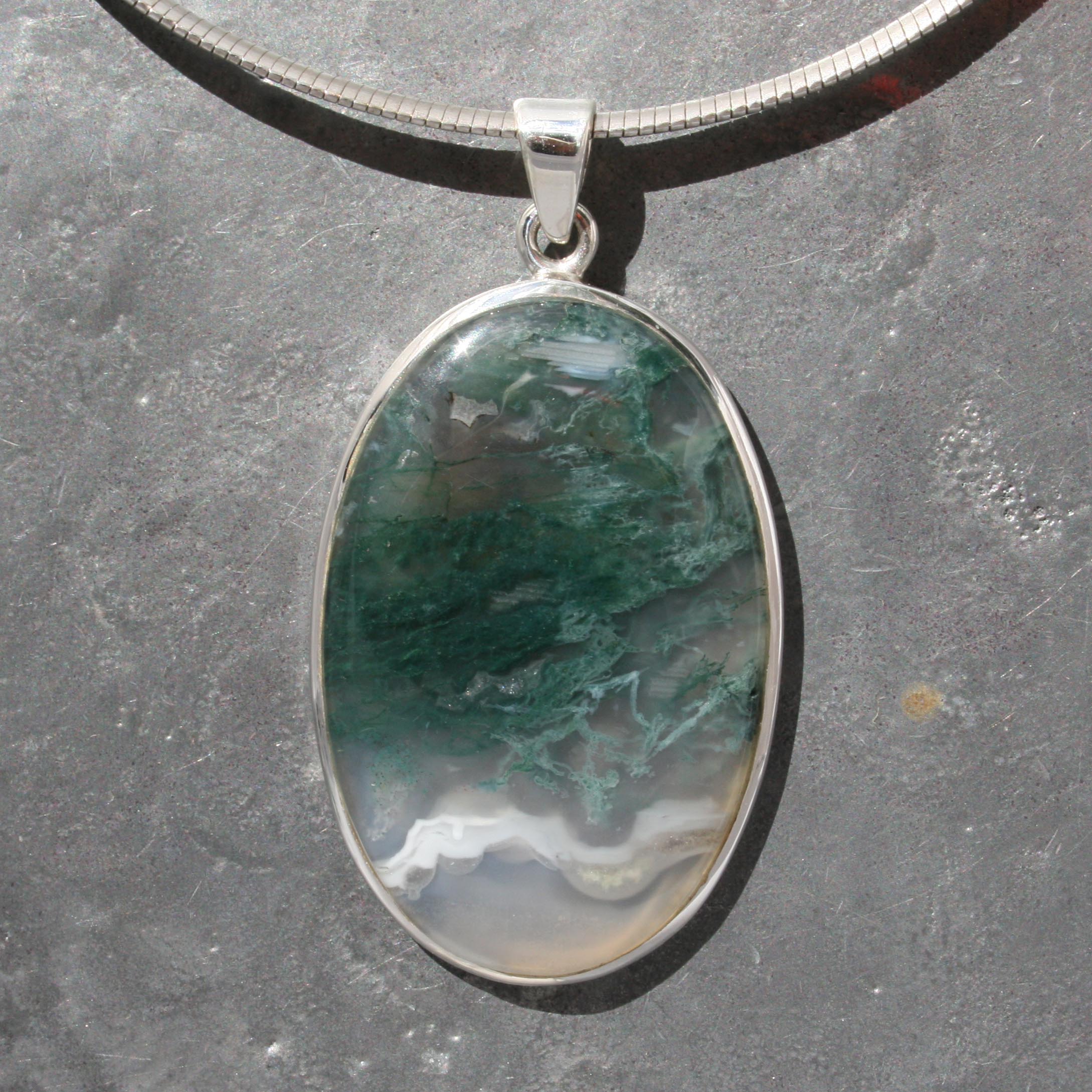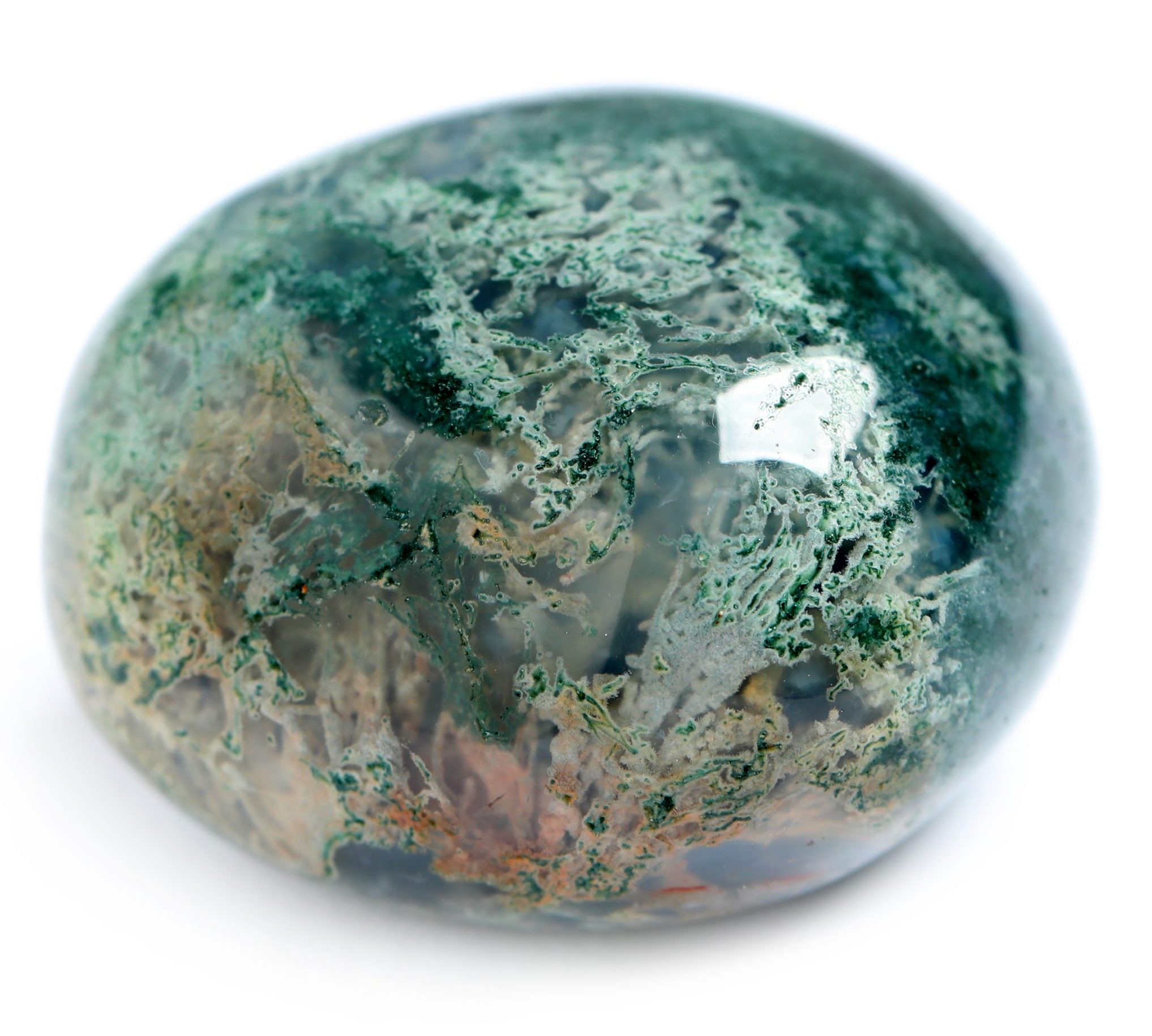When it comes to gemstones, moss agate hardness is a topic that deserves some serious attention. This stunning stone, with its intricate patterns resembling moss or ferns, has captured the hearts of many collectors and enthusiasts. But what makes it so special? And how durable is it in everyday wear? Well, buckle up, because we're about to take you on a journey through the fascinating world of moss agate and its impressive hardness.
Moss agate isn't just another pretty face in the gemstone world. It's a gem that boasts both beauty and resilience, making it a favorite among jewelry makers and collectors alike. Its unique appearance, combined with its practical durability, sets it apart from other stones. Whether you're a seasoned gemstone enthusiast or just starting to explore the world of minerals, understanding moss agate hardness is key to appreciating its true value.
But why should you care about moss agate hardness? Well, imagine investing in a piece of jewelry only to find out it scratches easily or chips at the drop of a hat. That's where knowing the hardness of your gemstone comes into play. It's like knowing the stats of your favorite athlete—important details that make all the difference. So, let's dive right in and explore what makes moss agate such a formidable contender in the gemstone arena.
Read also:Unveiling The Secrets Of Plage Des Fourmis A Beach Like No Other
What Exactly is Moss Agate?
Before we delve into the nitty-gritty of moss agate hardness, let's take a moment to understand what moss agate actually is. This gemstone, a variety of chalcedony, is renowned for its breathtaking green and brown patterns that resemble moss or tree branches. But there's more to moss agate than meets the eye. It's a cryptocrystalline form of quartz, which means its crystal structure is too fine to be seen with the naked eye. Cool, right?
Now, here's the kicker—moss agate doesn't actually contain any real moss. The patterns you see are caused by inclusions of manganese, iron, and other minerals trapped within the stone during its formation. These inclusions create the illusion of lush green landscapes, making each piece of moss agate utterly unique. And if that's not enough to pique your interest, wait until we talk about its hardness.
Where Does Moss Agate Come From?
The origins of moss agate are as fascinating as the stone itself. Found in various parts of the world, including India, Brazil, and the United States, moss agate forms in volcanic rocks over millions of years. The unique environment in which it forms contributes to its distinct appearance and properties. But what about its hardness? Does the location of its formation have any impact on it? Let's find out.
While the geographical origins of moss agate might influence its color and pattern, its hardness remains relatively consistent across the board. This consistency makes it a reliable choice for jewelry and other decorative items, ensuring that it can withstand the test of time without losing its luster.
Understanding Hardness in Gemstones
When we talk about gemstone hardness, we're referring to a stone's ability to resist scratching or abrasion. This is measured on the Mohs scale of mineral hardness, which ranks minerals from 1 (softest) to 10 (hardest). For context, talc is a 1 on the scale, while diamond is a 10. So, where does moss agate fall on this scale? Let's break it down.
Moss agate typically ranks between 6.5 and 7 on the Mohs scale. This places it in the moderate to high range of hardness, making it suitable for everyday wear. But what does this mean in practical terms? Well, it means that moss agate can handle the occasional bump or scrape without breaking a sweat. However, it's still important to treat it with care, as no gemstone is indestructible.
Read also:Mn Elite Softball Your Ultimate Guide To The Best Softball Action In Minnesota
Why Hardness Matters
So, why is hardness such a big deal when it comes to gemstones? Think of it this way—if you're going to invest in a piece of jewelry, you want it to last, right? Hardness plays a crucial role in determining how well a gemstone will hold up over time. A harder stone is less likely to scratch or chip, ensuring that your jewelry remains as beautiful as the day you bought it.
For moss agate, its hardness of 6.5 to 7 makes it a great choice for rings, bracelets, and other pieces that are worn frequently. It strikes a perfect balance between durability and affordability, making it an excellent option for those who want to enjoy their jewelry without worrying about constant maintenance.
The Science Behind Moss Agate Hardness
Now that we know moss agate ranks between 6.5 and 7 on the Mohs scale, let's explore the science behind this rating. The hardness of a gemstone is determined by the strength of the bonds between its atoms. In the case of moss agate, its quartz composition gives it a solid foundation of durability. Quartz, the main component of moss agate, is known for its impressive hardness, which contributes significantly to the overall resilience of the stone.
But there's more to the story. The inclusions within moss agate, such as manganese and iron, can also affect its hardness. While these inclusions create the stone's stunning patterns, they don't compromise its durability. In fact, they enhance its visual appeal without sacrificing strength. It's like having the best of both worlds—beauty and brawn in one package.
How Does Moss Agate Compare to Other Stones?
When it comes to gemstone hardness, moss agate holds its own against some pretty tough competition. Let's take a look at how it stacks up against other popular stones:
- Diamond (10): The king of hardness, diamond is virtually indestructible. However, its high price tag makes it less accessible for everyday wear.
- Topaz (8): Another hardy gemstone, topaz is a great choice for jewelry but lacks the unique patterns of moss agate.
- Quartz (7): As a member of the quartz family, moss agate shares its parent mineral's impressive hardness, making it a reliable option for daily use.
- Opal (5-6): While opal is stunning, its lower hardness makes it more prone to scratches and chips, limiting its practicality.
As you can see, moss agate strikes a great balance between beauty and durability, making it a standout choice in the gemstone world.
Practical Tips for Maintaining Moss Agate Jewelry
While moss agate is relatively hard, it still requires proper care to ensure its longevity. Here are a few tips to help you keep your moss agate jewelry looking its best:
- Avoid harsh chemicals: Chemicals like bleach and ammonia can damage the surface of your moss agate, so it's best to keep them away from your jewelry.
- Store it safely: When not in use, store your moss agate jewelry in a soft pouch or jewelry box to prevent scratches.
- Clean it gently: Use a soft cloth and mild soap to clean your moss agate jewelry, and avoid using ultrasonic cleaners.
- Handle with care: While moss agate is durable, it's still a natural material, so treat it with respect to avoid damage.
By following these simple tips, you can ensure that your moss agate jewelry remains as beautiful and durable as the day you bought it.
Common Myths About Moss Agate Hardness
There are a few misconceptions floating around about moss agate hardness, so let's clear the air. One common myth is that moss agate is as hard as diamond. While moss agate is certainly durable, it doesn't come close to diamond's unmatched hardness. Another misconception is that moss agate is fragile and prone to breaking. On the contrary, its hardness of 6.5 to 7 makes it quite resilient, even in everyday wear.
Understanding the truth about moss agate hardness can help you make informed decisions when purchasing or caring for your jewelry. So, don't fall for the myths—stick to the facts and enjoy the beauty and strength of moss agate.
The Role of Moss Agate in Jewelry Making
Moss agate's unique combination of beauty and hardness makes it a favorite among jewelry makers. Its durability ensures that it can withstand the rigors of everyday wear, while its intricate patterns add a touch of elegance to any piece. Whether you're crafting a simple pendant or a statement ring, moss agate is a versatile gemstone that can elevate any design.
But what about its practical applications? Moss agate is often used in rings, bracelets, and necklaces, thanks to its ability to resist scratches and abrasions. Its hardness also makes it a great choice for carved pieces, allowing artisans to create intricate designs without worrying about damage. It's no wonder that moss agate has become a staple in the world of jewelry making.
How to Choose the Right Moss Agate for Your Project
When selecting moss agate for your jewelry project, there are a few factors to consider. First and foremost, pay attention to the stone's hardness. While all moss agate falls within the 6.5 to 7 range on the Mohs scale, some pieces may be slightly harder than others. Additionally, consider the stone's pattern and color, as these can greatly impact the overall aesthetic of your piece.
Don't be afraid to experiment with different cuts and settings to find the perfect match for your project. Whether you're creating a classic piece or something more avant-garde, moss agate's versatility ensures that it will complement your design beautifully.
Historical and Cultural Significance of Moss Agate
Throughout history, moss agate has held a special place in various cultures around the world. In ancient times, it was believed to possess healing properties and was often used in spiritual practices. The stone's association with nature and its earthy tones made it a symbol of life and renewal, resonating with many cultures that revered the natural world.
Today, moss agate continues to be revered for its beauty and symbolism. It's often used in meditation and healing practices, with many believing that it promotes balance and harmony. Its historical and cultural significance adds another layer of depth to its appeal, making it more than just a pretty stone.
Modern Uses of Moss Agate
In modern times, moss agate has found its way into a variety of applications beyond jewelry. From home decor to wellness products, this versatile stone continues to captivate people across the globe. Its unique patterns and soothing colors make it a popular choice for everything from coasters to crystal grids.
As more people become aware of the benefits of natural stones, moss agate's popularity is only set to grow. Whether you're using it for its aesthetic appeal or its supposed healing properties, there's no denying the allure of this remarkable gemstone.
Conclusion: Why Moss Agate Hardness Matters
In conclusion, moss agate hardness is a key factor in determining its value and practicality as a gemstone. With a ranking of 6.5 to 7 on the Mohs scale, moss agate strikes a perfect balance between beauty and durability, making it an excellent choice for jewelry and other decorative items. By understanding its hardness and taking proper care of your moss agate pieces, you can enjoy their beauty and strength for years to come.
So, what are you waiting for? Dive into the world of moss agate and discover the beauty and resilience of this remarkable gemstone. Share this article with your friends and family, and let's spread the word about the wonders of moss agate hardness. Who knows—you might just find your next favorite piece of jewelry!
Table of Contents
- What Exactly is Moss Agate?
- Where Does Moss Agate Come From?
- Understanding Hardness in Gemstones
- Why Hardness Matters
- The Science Behind Moss Agate Hardness
- How Does Moss Agate Compare to Other Stones?
- Practical Tips for Maintaining Moss Agate Jewelry
- Common Myths About Moss Agate Hardness
- The Role of Moss Agate in Jewelry Making
- Historical and Cultural Significance of Moss Agate


